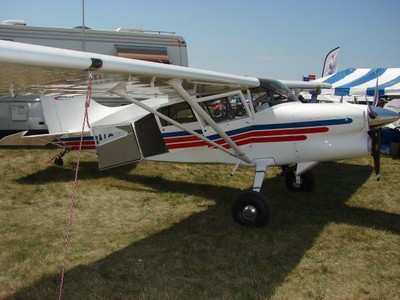He Said, He Said …
The NTSB has released its final report on a 20 March 2023 accident in which a Maule M-7-235C, registration N79VE, was substantially damaged and one of its two occupants seriously injured.

The Maule M-7-235C is a high-wing, strut-braced monoplane of conventional configuration designed and built by Moultrie, Georgia-based Maule Air. The aircraft is available in both conventional (tailwheel) and tricycle undercarriage iterations. The tailwheel-equipped accident aircraft was powered by a single, 235-horsepower, Lycoming O-540-B4B5, horizontally-opposed, four-stroke, six-cylinder aero-engine.
Seeking to better his tailwheel flying skills, the pilot/owner of the newly-acquired accident-aircraft retained the services of Certified Flight Instructor (CFI). Though appropriately rated and current in tailwheel airplanes, the pilot/owner conceded he lacked proficiency in the operation of such. In particular, the individual felt he required remedial training in landing tailwheel aircraft on short, narrow runways.
While receiving dual-instruction from the aforementioned CFI, the pilot/owner set up for landing on Runway 08 at South Carolina’s Abbeville Airport (SC81). A left (southerly) crosswind prevailed.
The pilot/owner stated he “arrived too high for the runway,” and reported the CFI subsequently took control of the aircraft for purpose of demonstrating a forward slip maneuver by which to lose altitude. The pilot/owner alleged the aircraft, under the CFI’s control, entered a left ground-loop after touchdown and sustained damage consistent therewith.
The flight instructor set forth a contrary account of the accident sequence, stating the pilot/owner was in the habit of flying with his feet high on the rudder pedals and—despite having been counseled to the contrary prior to the pair’s departure on the instructional flight—persisted in the practice.
After conducting air-work and undertaking takeoff and landing practice at an area airport, student and instructor returned to SC81. The CFI reported the pilot/owner—while attempting to land on SC81’s 2,250-foot-long, forty-foot-wide Runway 08—applied excessive left rudder approximately one-foot AGL. The CFI asserted the inappropriate application of rudder occurred so quickly he was unable to intervene before the Maule’s right wing contacted the runway surface, its right main landing gear separated from its fuselage, and the airplane skidded to a stop.
An engine shut-down and egress from the aircraft ensued.
The pilot/owner reported substantial damage to the Maule’s fuselage and both its wings. He reported, also, that the aircraft had been mechanically-sound prior to the accident-flight.
In his written statement, the flight instructor concurred, reporting no preflight mechanical anomalies with the accident-aircraft.

A Federal Aviation Administration inspector reported the flight instructor had no experience in the Maule M-7 prior to the accident-flight.
The National Transportation Safety Board determined the accident’s probable cause to be a loss of directional control during landing, which resulted in a ground loop and substantial damage to the airplane. The pilot flying could not be determined insomuch as both pilots claimed the other was at the controls during the accident-landing. The NTSB further determined the flight instructor, by accepting the training flight without prior experience in the aircraft make and model, had demonstrated poor aeronautical judgment.
Parties interested in learning more about the described event should reference NTSB Accident Number ERA23LA160.
 Unfortunate... ANN/SportPlane Resource Guide Adds To Cautionary Advisories
Unfortunate... ANN/SportPlane Resource Guide Adds To Cautionary Advisories ANN FAQ: Turn On Post Notifications
ANN FAQ: Turn On Post Notifications ANN's Daily Aero-Term (04.29.24): Visual Approach Slope Indicator (VASI)
ANN's Daily Aero-Term (04.29.24): Visual Approach Slope Indicator (VASI) ANN's Daily Aero-Term (04.28.24): Airport Marking Aids
ANN's Daily Aero-Term (04.28.24): Airport Marking Aids ANN's Daily Aero-Linx (04.28.24)
ANN's Daily Aero-Linx (04.28.24)




